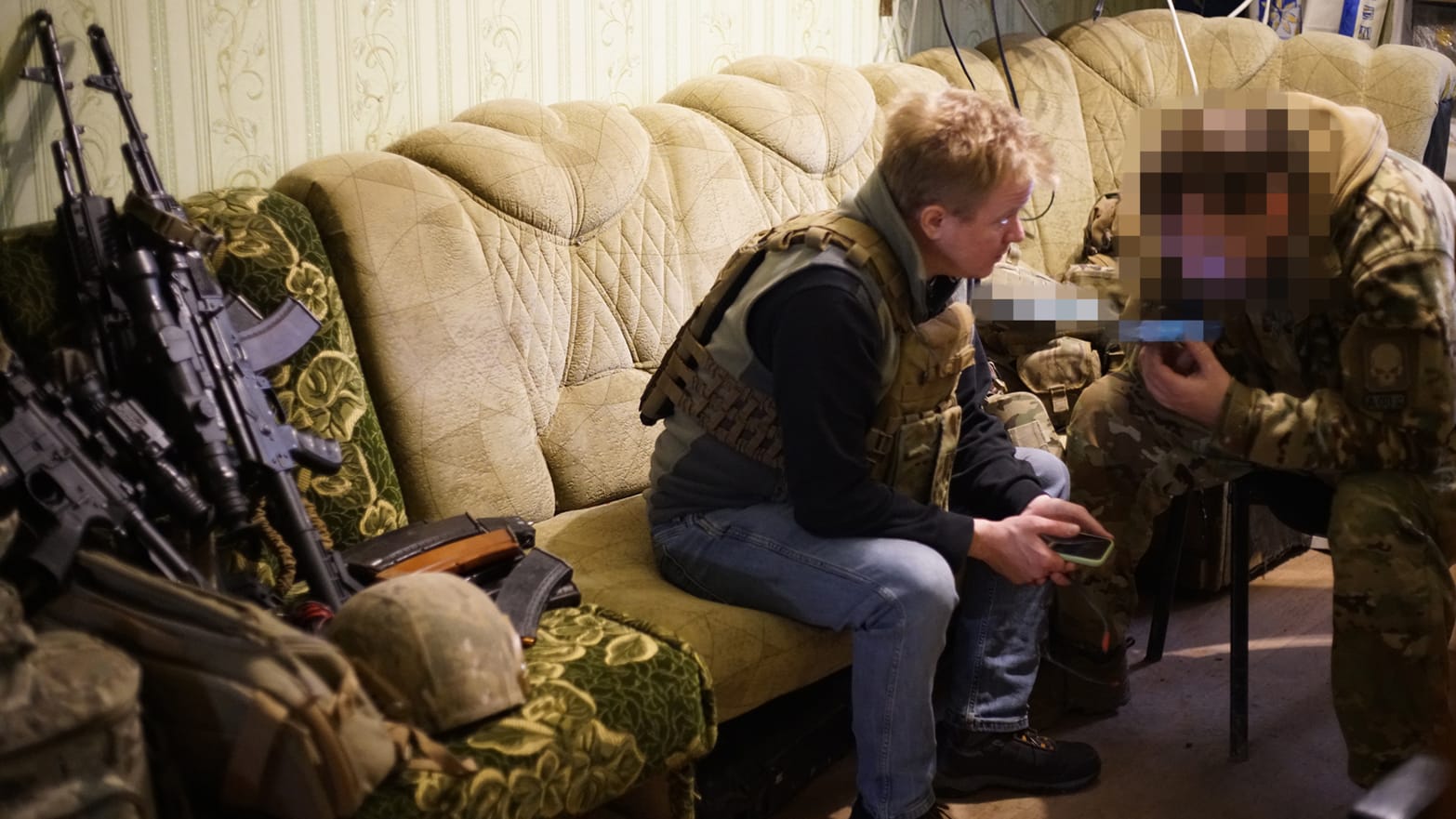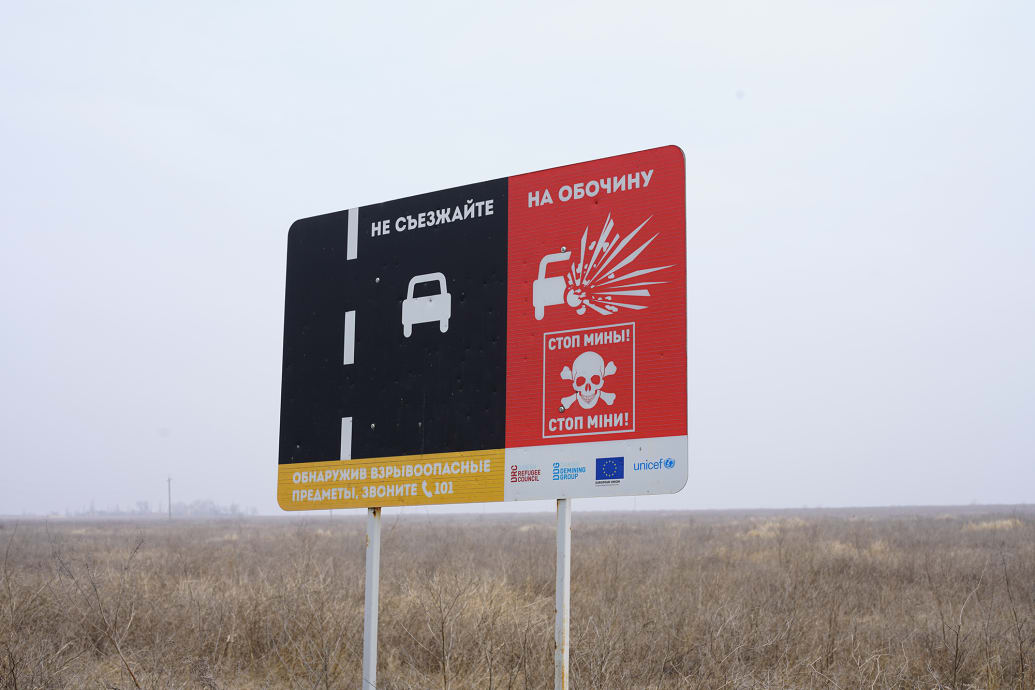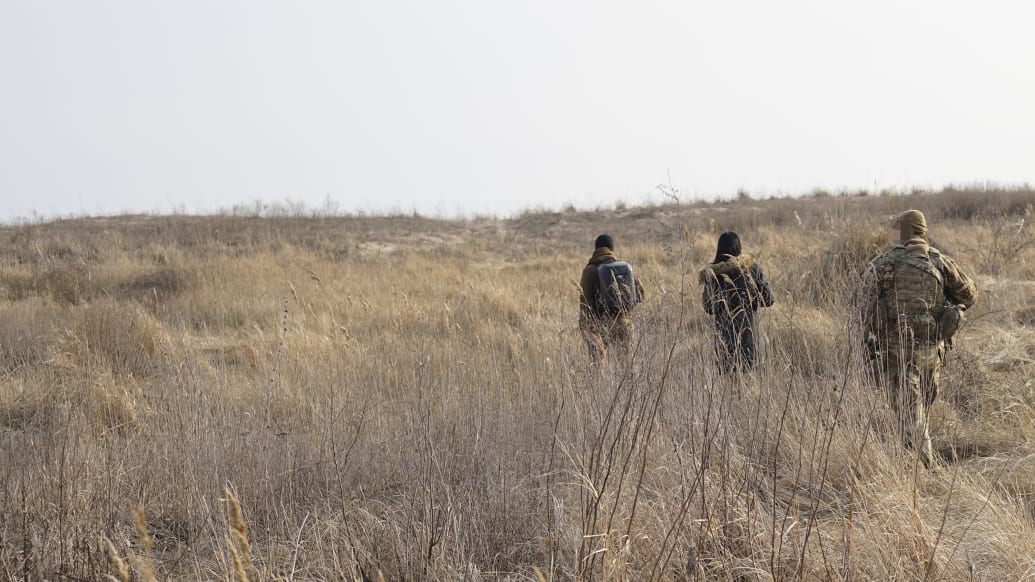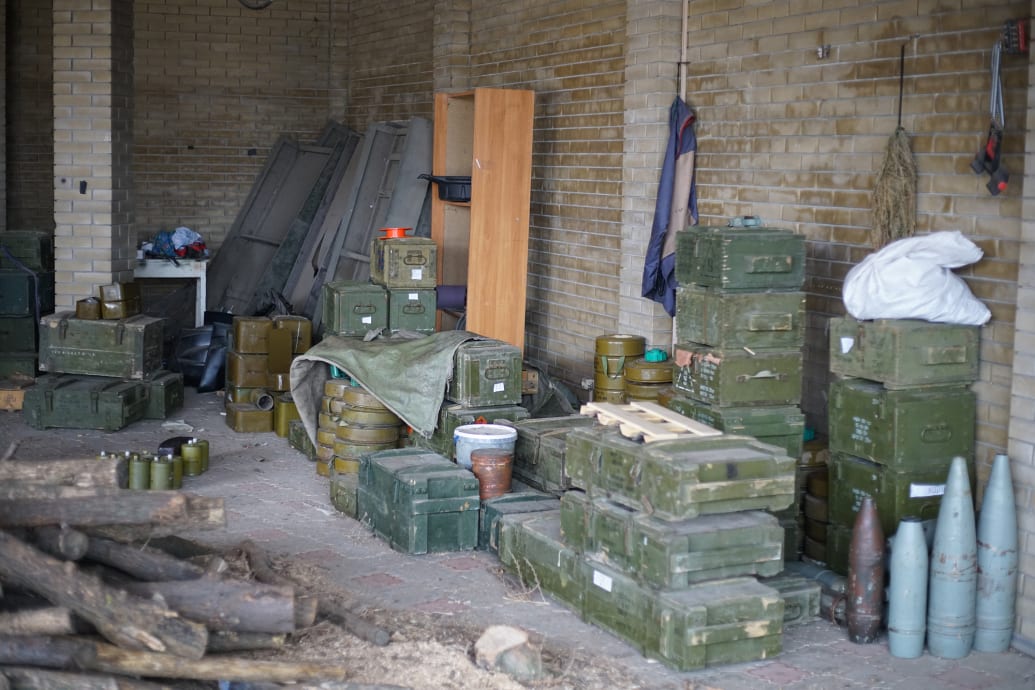The Ukraine Battle That Had Us Filming Our Dying Words
A gory onslaught in the south of Ukraine will haunt us for the rest of our lives. For the people of Ukraine, it’s only the beginning.
Will Cathcart, William Cooper – March 2, 2022

KHERSON, Ukraine—We hid in a town called Kherson, in the south of Ukraine, for 18 hours caught in the middle of a horrific battle. Russians attacked a vast line of Ukrainian tanks, transport vehicles, and personnel carriers from two directions. When a tank we passed was hit by a rocket-propelled grenade, we ditched our car. We ran from one place to another only to be turned back by rockets and artillery. We jumped into the bed of an old Soviet transport truck and cowered among stacks of tires. Bullets whizzed by above.
We were still in Mariupol when Russia invaded Ukraine—though it has been invading since 2014. We headed west as fast as we could, but that drove us straight into Kherson, in that truck right in the middle of the worst battle Ukraine had seen in a long time.
It was one of the first major clashes since Russia had invaded Ukraine early that morning. At this stage, Russia was making massive land grabs. Troops from Crimea had come north to seize a nearby airport.“The corpses of dead Russian soldiers were left out on display.”
The attack began at an overpass on the P-47 highway at 3 p.m. on Feb. 24, just outside Kherson, a strategic juncture near a small airport 100 km from the northern border of Crimea. As the explosions grew closer, we took out our phones and recorded videos saying goodbye to our 2-year-old sons and our families.
When we watch those videos now, we are overcome with shame and loathing for putting ourselves in that position.
In front of us was a dilapidated concrete structure. We ran for it, crawled beneath, and hid in the dirt. A truck driver and a farmer followed us. There were no windows or blankets, but the farmer found a moldy bed lining for us. And though magnificent flames reached into the sky around us in every direction, there would be no fire for us.
It was the longest and coldest night of our lives, and we didn’t sleep a wink. In the days since, when we can sleep, we dream of the dismembered, mutilated bodies we passed on our way out of that place. We spent the night freezing in the room above, uploading and deleting videos, photos, and interviews from our 14-hour embed the day before.
That day was spent with the volunteer Ukrainian paramilitary team Third Force, on the front near Mariupol. We had bonded with these men, an almost mythic team of 15 fighters, whose commander goes by the codename Groz. He knows that even guerrilla warfare is a war of hearts and minds. It is the first thing that he told us, and the last.

Ukraine has been at war for about eight days, but these guys had been at war for eight years. They have been fighting the Russian-backed separatists and FSB agents who attack them from the other side of the line just east of Mariupol, in the breakaway territory called the Donetsk People’s Republic, which Russia recognized as independent of Ukraine the day before we embedded with them. In our time together, they showed us everything: their methods and tactics, their improvisation, their tech campaigns, and their tremendous cache of ammo. They fed us and told us about themselves.
Earlier that day, they led us down a road lined with minefields on either side. The mines were left by Russian-backed separatists who took control of this area but knew they would not have it for long. There are ominous warning signs posted along the field. As we were walking, Groz yelled at me to stay on the road—with genuine panic in his eyes.
Eventually, we reached a strikingly beautiful beach on the sea of Azov where we were given a demonstration of their drones. One of the younger soldiers slips on the VR headset. Groz scans the area with his assault rifle. The drone takes off at 90 mph, straight to the front line. Soon afterwards, we heard bursts of gunfire, and the fighter with the VR headset began laughing. The drone came back unharmed, and we walked back to the base more carefully than we’ve ever walked in our lives.

That night, we met the head of an NGO called Blue Yellow, which delivers supplies to various battalions on the front. His codename is Panda. The work of Blue Yellow has become the stuff of legend, and for those seeking to help the front lines Blue Yellow would be a good place to start. Groz and Panda tell me that nearly all of the funding from the United States government never makes it to its destination. They believe that this is a matter of inefficiency rather than corruption.
When Groz dropped us off at the hotel that night, he hugged us. He removed the signature arm patch of the battalion from his shoulder and handed it over to us. Then he was gone.
Several hours later, the real war began. We realized the danger we were in and also the danger that Third Strike could face if we were detained. We knew we wouldn’t be treated like journalists. For the Russian forces currently targeting civilian dwellings, the Geneva Conventions are just a punchline. The easy thing to do would be to delete everything. But Groz went to great risk in giving away his position and tactics,and for a reason: He was counting on us to tell his story. Groz wants the world to know that this fight will not be the fight Russia is expecting. These men are ready for all types of warfare. They are innovative. And there are many more like them.

In seeking to put as much distance between ourselves and Mariupol, we drove straight into the hell in Kherson that has followed us both home and will likely drag us back.
In that concrete structure in Kherson, we watched as Russian tanks rolled by just outside the window and forces from both sides roamed around the surrounding forests. The battle shifted to a nearby bridge, which Ukrainian forces were trying to take back. We were in Russian-controlled territory, and this bridge was our only way out. All night, Russian jets bombed Ukrainian forces as they struggled to maintain control. Somehow, the Ukrainians prevailed.
Just before dawn, we received a message from an intelligence contact who had been checking in on us all night looking for a way to get us out. He said that Ukrainians had taken back the bridge but he had no idea if it was safe to get there. We knew this might be our only chance. So, we made a mad dash for that bridge.
As we drove back onto the highway towards the overpass where we had been when the fighting broke out, we were witness to a charred wasteland. Bombed-out Ukrainian tanks were everywhere. The corpses of dead Russian soldiers were left out on display. As we got closer to the bridge, the scenery grew worse. We passed pieces of dead Russian soldiers. Near the top of the bridge, in the middle of the road was the nude upper torso of a bifurcated human being.

We were told that 30 minutes after we crossed that bridge, Russian forces took it back. We headed west for Odessa. But we knew we couldn’t stay there long. There were reports of Russian groups roaming the city at night, creating havoc. We hired a driver to take us to the Moldovan border. But refugee crises had already begun. Traffic was backed up for miles.
So instead, we headed for the unrecognized state of Transnistria, a narrow strip of Russian-backed breakaway Moldovan territory along the Ukrainian border. Upon entry, we were detained by the Transnistria KGB and politely interrogated. They didn’t know what to make of us. The suspicion quickly turned to fascination and bafflement. Eventually, they let us go, and we crossed into Moldova. Our relief to be on EU territory was immeasurable. But Moldovan airspace was closed, and it would be days before we would get back home.
Many more have died since that night on Feb. 24, and many more are likely to die in the days and weeks to come. It’s been a long time since one man held the Free World hostage with his own self-serving pragmatism. But as Putin deprives 44 million people of their humanity and their allies of our honor and integrity, the least we could do, as journalists, was put his depravity on full display.
